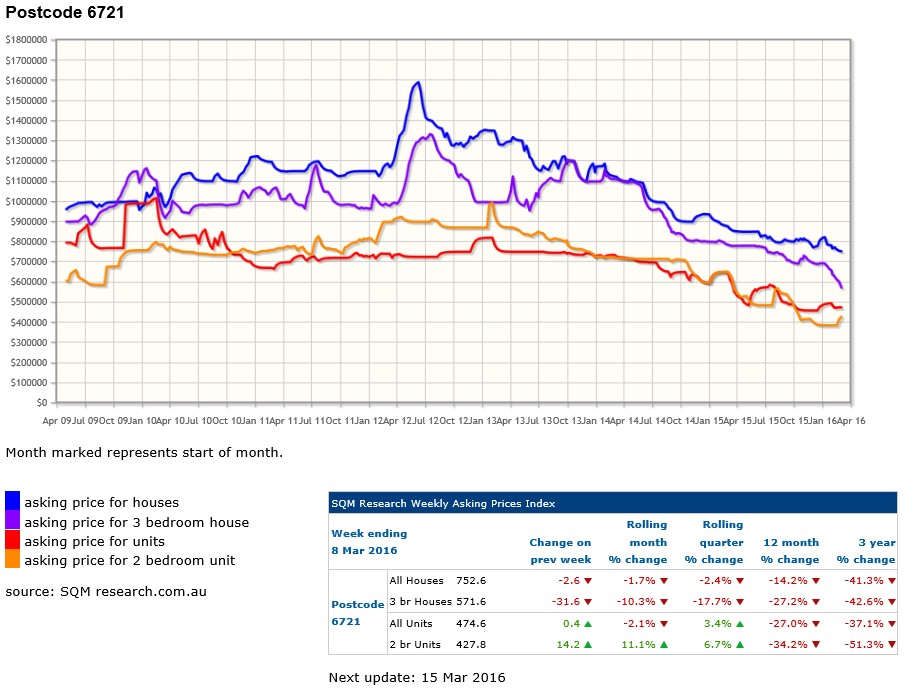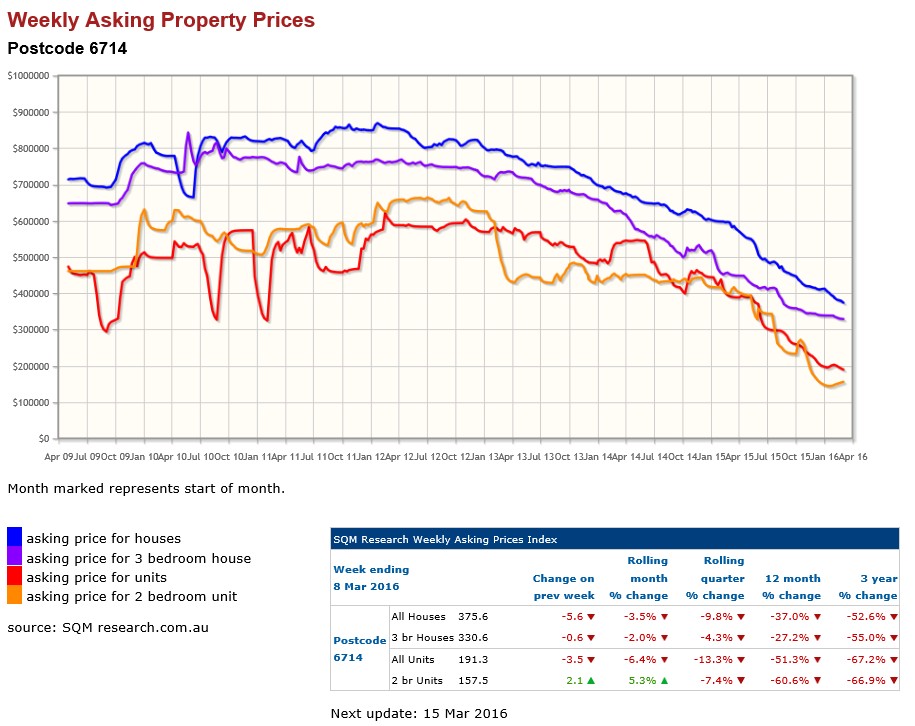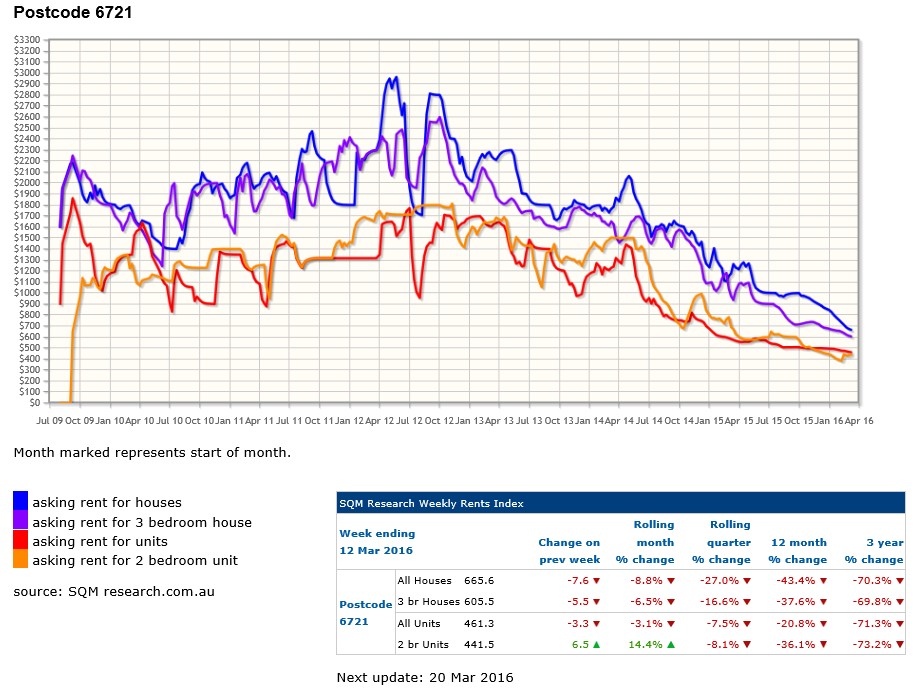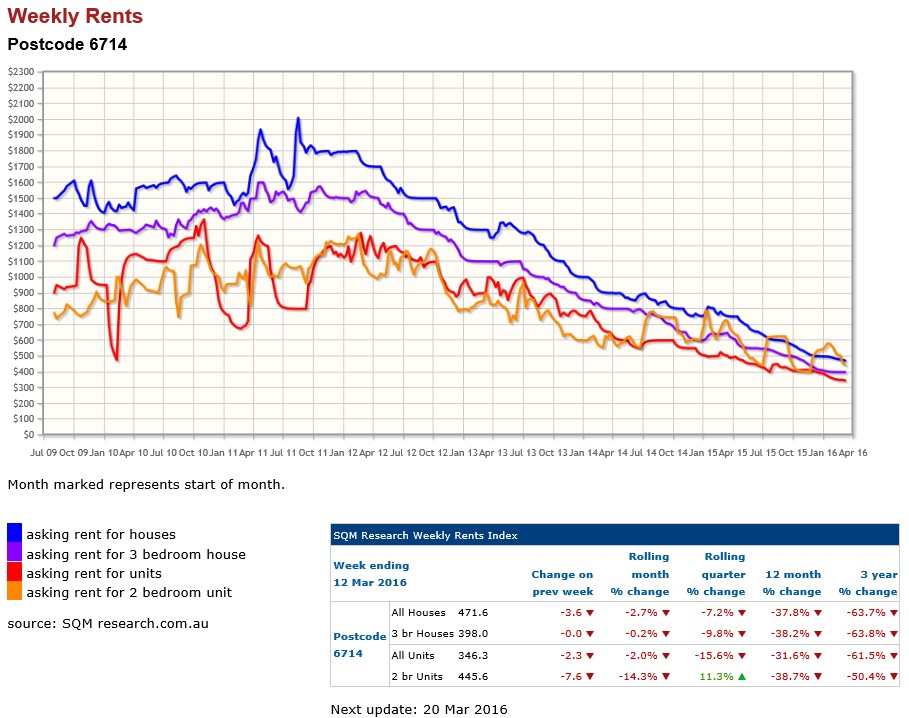Terry Ryder has written a vitriolic post in Property Observer, entitled Company at the bottom for faulty market forecasters, lambasting everyone that has held a bearish view on Australian property at one point or another, including yours truly:
Fringe dweller Leigh van Onselen, who has a lifetime of raging against real estate, stated in February 2012 that the “slow melt” in Australian house prices would continue.
There’s an old saying that people in glass houses shouldn’t throw stones. Well let’s take a look at some of Ryder’s unmitigated disasters when it comes to forecasting.
Here’s what Ryder wrote in February 2011 in an article entitled Property killings to be made in the Pilbara boom [my emphasis]:
Port Hedland and Karratha, the key regional centres of the Pilbara, have the most expensive housing markets in regional Australia. They are also the most remarkable because, while you can pay $800,000 for the average house, you can still earn a 10 per cent rental return, with typical rents topping $1600 a week.
The value of Karratha homes has grown an average 16-17 per cent a year over the past decade, which suggests values have been doubling every 4-5 years on average. It’s the same story in Port Hedland, where the median house price has grown from $190,000 to $835,000 in less than 10 years…
These are locations where there really is a shortage of accommodation relative to demand.
The pressure on prices and rentals is likely to grow, given the scale of resources developments impacting on these towns…
The population of both towns [Karratha and Port Hedland] will triple, with more than 10,000 new homes in each over 15-20 years.
Again in January 2012, Ryder picked Port Hedland as a key investment opportunity in an article entitled Mining towns lead list of property hotspots:
[Ryder] describes Port Hedland as having “the most extraordinary property market, with house prices rising an average 22% per year for the past 10 years and the median price now $1.04 million”.
“Just when you think they can’t go any higher, they do. The median price rose 11% in 2011. Despite these ridiculously high prices, you can still get 10% yields because typical rents are above $1,800 per week. There is no other market like this in Australia,” he says…
Now let’s take a look at how these “hotspots” have performed.
The below graphics of asking prices for three-bedroom houses in Port Headland reveals prices for three-bedroom houses shot up in 2012 to $1.3 million, but have since tumbled to just over $571,000. Prices for three-bedroom houses are down almost 27% in the last year alone and by more than 40% over the past three years:
In Karratha, another Pilbara town, the story is similar. While house prices never soared like they did in Port Headland, the below graphics show that asking prices for three-bedroom houses have crashed by 55% over the past three years, down to just under $330,600. Now that is what I call forecasting error!




